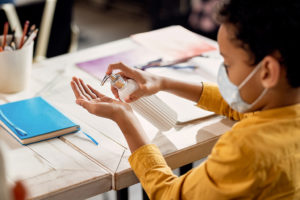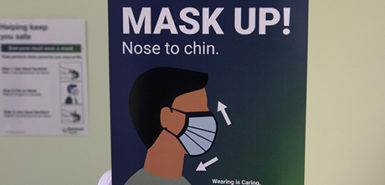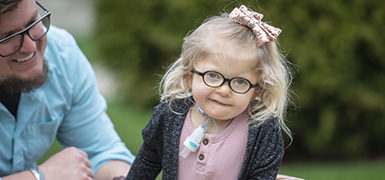
School days have never been like this.
One day they’re open, resounding with the voices of children. The next day they’re empty, silent as those same children sit at home computers for a day of virtual learning.
This is learning in the time of COVID-19.
As COVID-19 numbers fluctuate and surge, preventive measures are as important as ever.
“Whether in person or virtual, we all know this school season has looked and felt much different than what we have experienced in the past,” said Lisa Lowery, MD, MPH, section chief of adolescent and young adult medicine at Spectrum Health Helen DeVos Children’s Hospital.
Dr. Lowery and other experts spoke recently about the challenges that parents, students, school employees and health teams face as they navigate the rest of the school year.
Rosemary Olivero, MD, a pediatric infectious disease specialist and division chief at Helen DeVos Children’s Hospital, said COVID-19 has been a roller coaster and the key to a smoother path is continued preventive measures.
Follow safe strategies
As the holiday season concluded, schools once again reevaluated their strategies for safety.
Teams at Spectrum Health are working regularly with Kent County Health Department and area schools as they follow carefully developed strategies to help limit the spread of COVID-19.
“Not one strategy, but layers and layers and layers of strategies,” said Joann Hoganson, RN, MSN, director of community wellness at the health department.
“School is more than just learning reading and writing and arithmetic,” Hoganson said. “It is also about social and emotional development. So we have strategies of wearing masks, social distancing, hand-washing and quarantining.”
Generally, COVID-19 hasn’t affected children’s health as severely as it has adults. Children also tend to recover faster if they do become sick, or they’re often asymptomatic.
But that doesn’t mean children should be any less careful about contracting the disease, Hoganson said.
“We can never know every case in schools,” she said. “Contact tracing doesn’t always lead to results. But when we do know, we know that most cases arise from outside activities, not the classroom. Usually it’s parties, sports events, social activities… or, most commonly, from someone’s house.”
Creative social interactions
When interactions involve children, health teams typically recommend physical distancing.
This isn’t necessarily the same as social distancing, Dr. Olivero said.
“Children especially still need social contact, but you can get creative in how you have fun,” she said. “Drive-bys, Zoom parties, FaceTime, playing video games together virtually can all be ways to maintain social contact safely.”
Dr. Olivero discourages high-risk activities such as indoor gatherings in small spaces where ventilation isn’t as efficient and it’s harder to stay apart.
Children can easily forget about staying 6 feet apart during play.
“Hand-washing and wearing masks are always encouraged,” she said. “Avoid high-touch surfaces and use hand sanitizer when washing isn’t possible. Plan ahead when you want to get together with friends. Make sure everyone is wearing a mask and talk to other parents about safe activities for kids.”
“Parents have to have those tough conversations with their kids,” Dr. Lowery said. “You can’t just play at your friend’s house anymore.”
Stay informed
Effective communication is essential for parents, students and school leaders.
If children or other family members have contracted COVID-19, parents need to get that information to school administrators as quickly as possible.
“We can only do our job as well as the information we receive,” said Heather Norman, RN, a school nurse at Comstock Park Public Schools. “Every case, every school is different.”
Area schools undergo daily screenings of students and staff as they enter the building. They take temperatures, ask questions about exposure and watch for possible symptoms.
The health department advises students and school employees to wear masks when they are in school or being transported to and from school, unless they are eating or drinking or they’re outside in open air and socially distanced from others.
If a child can’t wear a mask for medical reasons, the parent should consider an alternative to face-to-face education, such as virtual education. This can help protect their child and others.
“We are all by now feeling COVID fatigue,” Dr. Lowery said. “But this is not a sprint. It’s a marathon. We have to stay with it and follow the strategies.”

 /a>
/a>
 /a>
/a>
 /a>
/a>